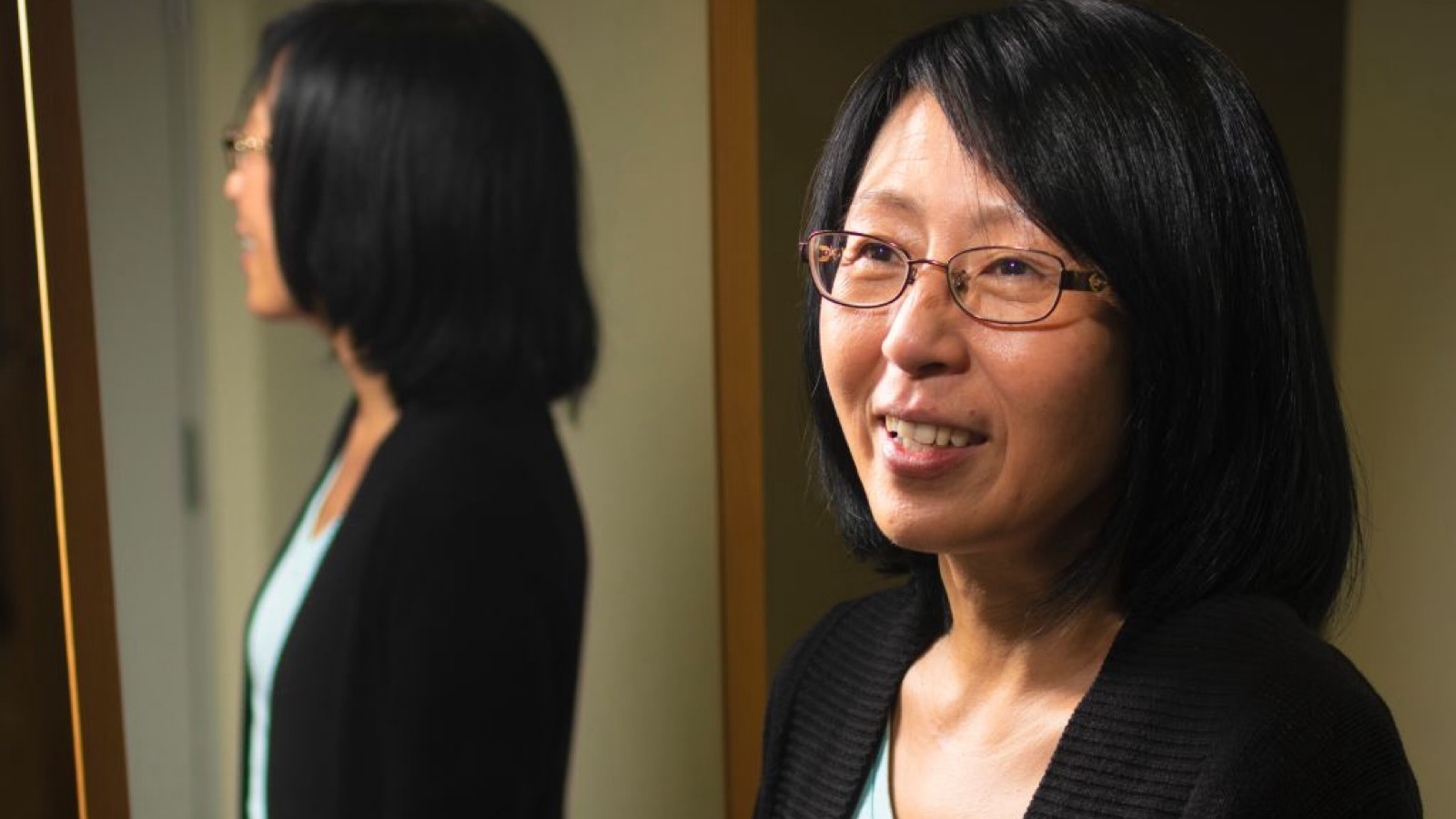Seeing both sides: leading researcher explores the double-edged nature of chirality
Adrianna MacPherson - 30 October 2024

Newly minted Killam Annual Professor Yunjie Xu’s research into chirality and chiral recognition could lead to new and improved strategies for drug design.
The scientific property known as chirality can be most easily demonstrated by looking at your own hands. They are mirror images to each other and have many similarities, but no matter how you position them, you can’t superpose them (lay them atop one another). This is because they’re chiral objects.
Cells are largely composed of molecules that are chiral — examples include everything from amino acids to nucleotides to sugars. Understanding the property of chirality is essential to gaining a deeper understanding of various biological systems, explains Yunjie Xu, a professor in the Faculty of Science.
“Biological systems extensively utilize non-covalent interactions, as they require flexible interactions between molecules, with the outcome of these interactions governed by many different factors,” says Xu. Depending on their surrounding environment, chiral molecules may change their shape or seek out interactions with molecules of particular chirality, behaving much differently from those governed by rigid chemical bonds.
Xu designs experiments using a variety of spectroscopic methods and tools to isolate influencing factors, with the aim of better comprehending the behaviour of chiral molecules and determining how they recognize one another in different situations and environments.
Understanding is crucial
More knowledge of chirality can fuel the discovery and development of chiral catalysts — substances that increase the rate of chemical reactions — but it’s of particular importance when it comes to drug design and development.
“Everything in our body — amino acids, sugars — is chiral, and we have an exclusive preference for one chirality over the other, reflecting the homochirality of life,” says Xu, who is the Canada Research Chair in Chirality and Chirality Recognition. “Chiral drugs enter your body, target certain receptors, and one form can adapt to the environment and deliver the intended message more effectively than the other.”
Failing to consider chirality in drug design has potentially devastating consequences. The drug thalidomide is one of the best-known examples of this. Thalidomide was widely used in the 1950s and 1960s, mainly as a treatment for morning sickness. The problem is that thalidomide is a chiral drug — one form has the intended effect, but the other form can cause serious birth defects.
As Xu explains, “Researchers realized later on that when these two forms are in the body, they interconvert, so no matter what form is given, it can cause birth defects.”
This tragedy led to the FDA ruling that for any chiral drug, researchers and drug developers must provide the data on toxicity for all potential forms of the drug.
“Everything has to be done with chiral sensitive detection, and I believe that’s why this area of research took off and got noticed,” Xu notes.
Given the potential consequences of certain forms of chiral drugs, they can only be sold as single enantiomers — this means only one form of the drug ever goes into the body, avoiding the potential damage of the mirror-imaged form.
To continue advancing her research, Xu wants to figure out how to amplify the chiral signals for highly sensitive chiral detection, which is where something called resonance factors into the equation.
“Chiral signals are typically much weaker than nonchiral parent signals, anywhere from 10,000 to a million times weaker,” says Xu. “Resonance is an approach that allows us to amplify the chiral signal that we can detect.”
And though her research focus thus far has been on small molecules in complex environments such as aqueous solutions, she’s also interested in exploring molecules within bigger biological systems.
Coming full circle
Xu, who was recently awarded a Killam Annual Professorship, says the honour is a full-circle moment of sorts — in 1997, she was an Izaak Walton Killam Postdoctoral Fellow.
“That scholarship came at a very crucial and challenging moment in my career,” she says. “It allowed me to build my confidence and understand what I wanted to research, and encouraged me to keep going.”
She has since become an authority in her field with an abundance of awards and publications to her name, cultivating a research reputation that led to the prestigious professorship.
“I’m incredibly grateful to the Killam Trusts, as well as for the ongoing support from my scientific community, especially Jed Harrison and Roderick Wasylishen, who inspired me to reach for the sky while I was an assistant professor,” says Xu. “It’s very humbling.”